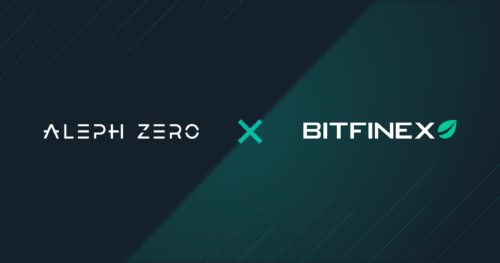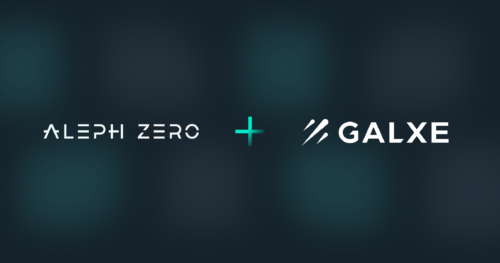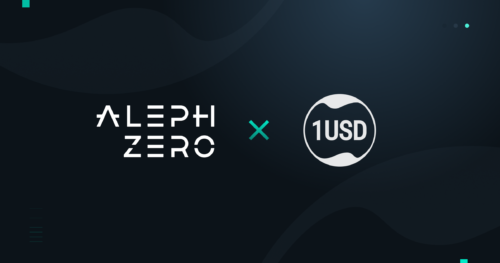The Common Whitepaper. Podcast Key Takeaways.
Oct 12, 2023

In the most recent episode of the Aleph Zero Podcast, we meet with Damian Straszak, to discuss the release of the Common Whitepaper and what it heralds for developing Common, Aleph Zero’s native decentralized exchange.
Listen to the full episode on the platform of your choice.
TL;DL:
Too Long, Didn’t Listen
- Common has been created to answer the problems around privacy, price efficiency, and custody on DEXes and CEXes.
- It’s a DEX that enables users to stay private, get optimal asset prices, and maintain full custody over their assets.
- It allows trading large amounts while avoiding order book pressure and minimizing the effects of MEV.
- It solves the liquidity problem, aggregating it from on- and off-chain sources through enabling arbitrage with the Dutch Auction mechanism.
- Users will get to store their assets and trade through shielded pools–the default, private way of using Common.
Problem statement: the motivation behind building Common
The Common Whitepaper authors analyzed the exchanges available on the market–both CEXes and DEXes–and came up with three questions that had to be answered regarding the experience of retail and institutional traders when using each of the solutions.
- What is the price efficiency of a particular solution? Liquidity, what prices can we get on an exchange and for on-chain solutions–what’s the influence of MEV on the prices
- What levels of privacy does the solution offer?
- What model of custody does the solution offer?
Here’s what they found.
For Centralized Exchanges, the answers were simple:
Price efficiency
- The price efficiency is excellent thanks to plenty of liquidity,
- Most of the funds in the digital space are held on CEXes,
- Fees are not large in most cases.
Privacy:
- It’s good enough for many users as the transactions are visible to only one party–the exchange itself.
- However, you have to trust that the exchange is not using the information to counter-trade you.
Custody
- Centralized exchanges require you to use their custody over your assets.
For Decentralized Exchanges:
Price efficiency:
- Liquidity is not as good as on CEXes.
- There are threats related to MEV bots and frontrunning of trades, especially large ones.
Privacy:
- It’s non-existent on-chain.
- All the actions of the user are public, you can inspect the whole transaction history. This is critical for institutional users to maintain their edge.
Custody:
- Users have full control over their assets, they don’t have to rely on any 3rd party custodian.
Diving deeper: how is trading with $1 million different on a CEX and a DEX?
In the episode, Damian explains how conducting a large trade differs between the two types of exchanges.
Trading on a Decentralized Exchange (DEX):
When conducting a large trade on a DEX, the transaction is initially visible in a mempool, awaiting confirmation on the blockchain. Large trades in the mempool are prime targets for specialized actors seeking to extract profit from them.
Even after the transaction moves on-chain, DEXs may struggle to provide favorable prices due to insufficient liquidity for large orders. Smaller trades often enjoy better rates, while larger orders are more dependent on the DEX’s liquidity. MEV bots play a crucial role in arbitraging across various DEXes to balance prices and capitalize on these transactions.
This practice, known as backrunning, generally benefits the overall ecosystem. The lion’s share of profits generated from MEV typically goes to MEV bots, with a smaller portion benefiting miners or validators. Frontrunning, facilitated by MEV, can negatively impact traders.
Specialized actors can execute transactions ahead of a large trade, artificially inflating prices. Sandwich attacks aim to maximize value by exploiting other users’ trades, often at their expense. Slippage becomes a significant concern. Order-book DEXes have not gained as much popularity as Automated Market Makers (AMMs), resulting in lower overall liquidity.
Trading on a Centralized Exchange (CEX):
On a CEX, traders typically place limit orders and wait for them to be filled. Even if immediate liquidity is lacking, CEXs generally ensure that orders will eventually be met, barring significant market shifts. Arbitrageurs operate actively on CEXs, moving liquidity between different platforms. The visibility of your order can influence other traders’ decisions and actions.
Trading on a centralized exchange involves trusting the platform to handle your assets securely. However, this trust can carry its own set of risks. CEXs often provide custody solutions that can simplify the user experience, but users should have the choice to maintain control over their assets.
In summary, DEXs offer decentralization and transparency but come with liquidity and MEV-related challenges. On the other hand, CEXs provide greater liquidity assurance and convenience, but they require users to trust the platform. Ultimately, the choice between a CEX and a DEX depends on the individual trader’s priorities, risk tolerance, and trading objectives.
How does Common work?
Common operates on a unique system that prioritizes privacy and transparency throughout the trading process. To understand how it functions, let’s break it down step by step:
All user assets are securely stored in a shielded pool, guaranteeing that transaction amounts remain confidential and are not disclosed to the public eye.
While trading, only the price of an order and the order itself are visible to other users, preserving the privacy of all participants.
Common functions primarily as an order book, exclusively utilizing limit orders for transactions.
Users have the option to send a limit order, such as selling an ETH position for 1 million USDT.
The order matching happens in two phases.
Phase 1: The system calculates the total value of tokens in a trading pair (e.g., ETH-USDT) and conducts internal order matching within a specified price range. This occurs without imposing any transaction fees.
Orders are aggregated during this phase, with larger orders becoming public. However, specific order details beyond the price remain confidential.
Phase 2: Liquidity is pooled from market makers and off-chain sources through a Dutch auction.
The user experience on Common closely resembles that of Centralized Exchanges (CEXs). Users place a limit order and wait for it to be executed. Limit orders can be canceled at any time, providing users with flexibility and control over their trading strategies.
Market makers play a pivotal role in maintaining a balance between buying and selling parties, ensuring that the final transaction price is satisfactory for both sides.
In summary, Common offers a secure, transparent, and efficient trading platform that combines the benefits of decentralized and centralized systems. It places a strong emphasis on user privacy while providing an effective price discovery mechanism. This innovative approach creates a trading environment that is both user-friendly and privacy-conscious, bridging the gap between traditional centralized exchanges and decentralized alternatives.
The Dutch auction as the incentive for improving liquidity
In Common, a Dutch Auction operates as a decentralized price discovery mechanism for assets.
An asset is initially listed at a set starting price and remains open for offers for a disclosed duration, such as one day. If no offers are made during this time, the asking price is automatically lowered. The auction continues in this manner until a participant is willing to meet the current asking price.
Due to the competitive nature of blockchain environments, if the price becomes attractive enough, offers are likely to be made quickly to outbid potential competitors. This makes Dutch Auctions particularly effective on blockchains, allowing for on-chain listings and real-time competition among multiple parties.
Privacy through shielded pools
Shielded pool is the default way of storing assets for use in Common, although it is optional to do so. It allows users to keep their orders private, as well as doesn’t disclose their holdings, ensuring they maintain their competitive advantage and security.
To enter the Shielded pool, compliance checks will be put in place to prevent bad actors from exploiting Common’s privacy features.
Proposing a solution to the liquidity problem
As the authors have identified, DEXes suffer from large trade slippage due to insufficient liquidity. To solve this problem, the Dutch Auction mechanism ensures that arbitrageurs can move the liquidity from on-chain and off-chain sources, effectively aggregating it from the broader market to trade against Common.
This makes Common the go-to venue for traders of all kinds, both retail and institutional.
Listen podcast

EP. 16 The Common DEX Whitepaper
The latest episode of the Aleph Zero Podcast sheds light on the Common Whitepaper, the fundamental document at the heart of the ecosystem's native DEX. We'll be meeting up with Damian Straszak, who will explain the mechanisms and design choices that will go into creating our vision for modern DeFi solutions.


